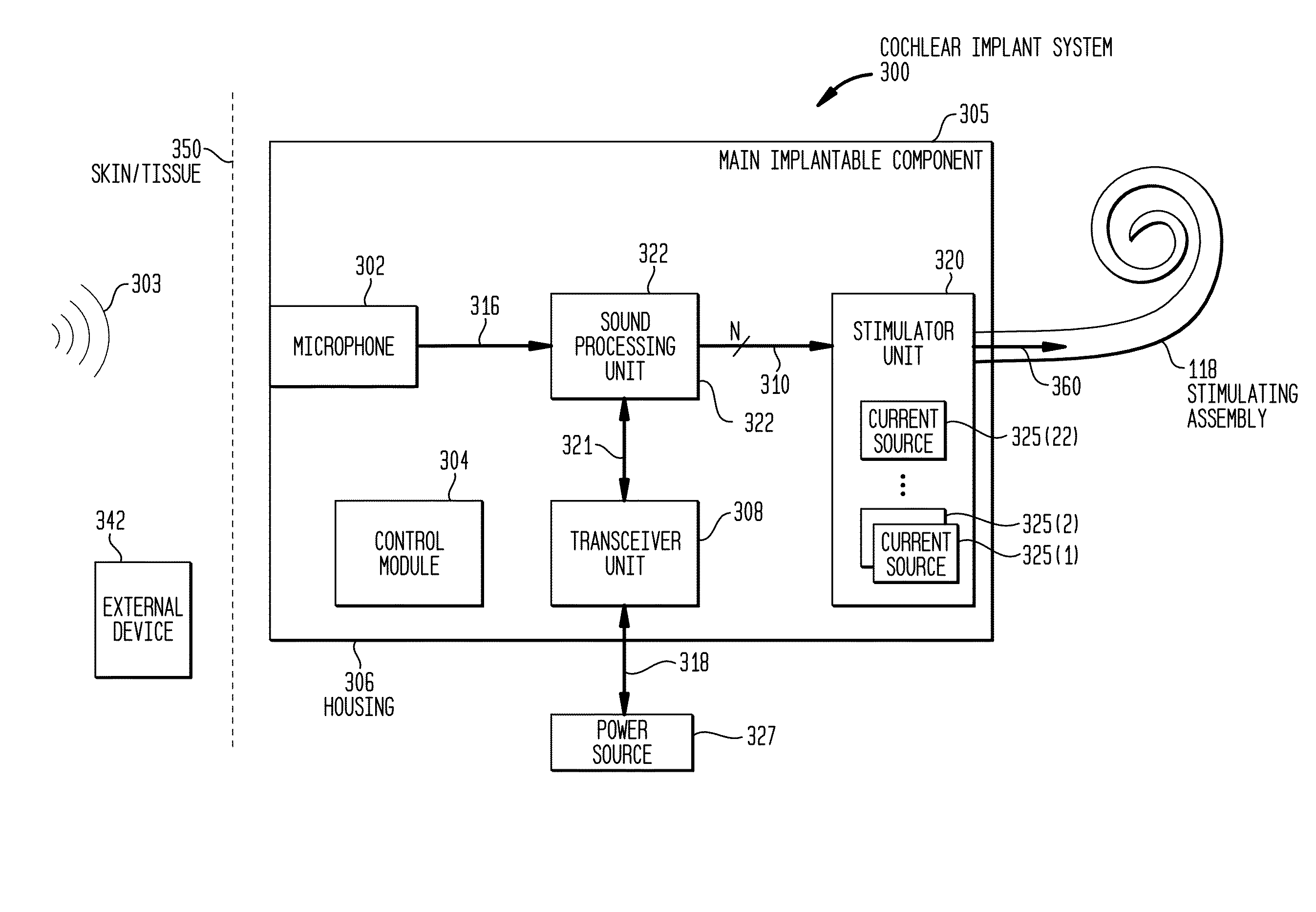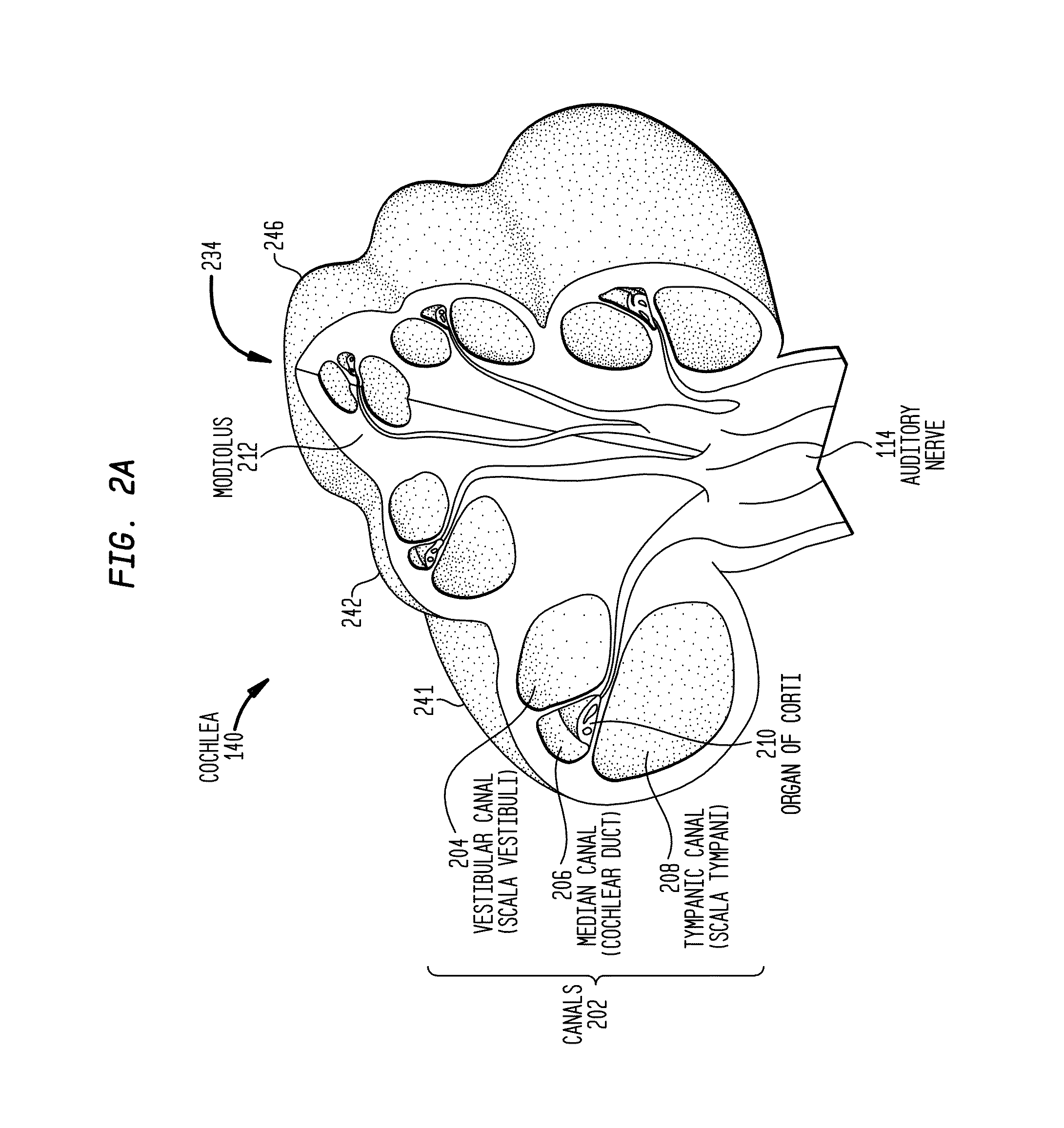Cochlear Implant Stimulation
a technology of cochlear implants and stimulation electrodes, applied in the direction of internal electrodes, artificial respiration, therapy, etc., can solve the problems of conductive hearing loss, impeded normal mechanical pathways of the outer and/or middle ear, deafness and sensorineural hearing loss
- Summary
- Abstract
- Description
- Claims
- Application Information
AI Technical Summary
Benefits of technology
Problems solved by technology
Method used
Image
Examples
Embodiment Construction
[0027]Presented herein are trans-modiolar stimulation techniques in which stimulation current is sourced (delivered) by at least one intra-cochlear stimulating contact and is sunk at a group of other intra-cochlear stimulating contacts. The group of other intra-cochlear stimulating contacts is positioned (located) across a section of the recipient's modiolus from the intra-cochlear stimulating contact that sources the stimulation. As such, stimulation current generally passes through the modiolus to stimulate spiral ganglion cells and evoke a hearing percept.
[0028]FIG. 1 is perspective view of an exemplary cochlear implant 100 configured to execute trans-modiolar stimulation techniques in accordance with embodiments presented herein. The cochlear implant 100 includes an external component 142 and an internal or implantable component 144. The external component 142 is directly or indirectly attached to the body of the recipient and typically comprises an external coil 130 and, genera...
PUM
 Login to View More
Login to View More Abstract
Description
Claims
Application Information
 Login to View More
Login to View More - R&D
- Intellectual Property
- Life Sciences
- Materials
- Tech Scout
- Unparalleled Data Quality
- Higher Quality Content
- 60% Fewer Hallucinations
Browse by: Latest US Patents, China's latest patents, Technical Efficacy Thesaurus, Application Domain, Technology Topic, Popular Technical Reports.
© 2025 PatSnap. All rights reserved.Legal|Privacy policy|Modern Slavery Act Transparency Statement|Sitemap|About US| Contact US: help@patsnap.com



